It's frustrating to be driving back from the mechanic's after having a new thermostat installed in your car and your
car is still overheating after being given the all clear from the mechanic himself.
You're probably thinking...
Why is my car overheating with a new thermostat?
Your car could be overheating with a
new thermostat for a variety of reasons including a faulty water pump, worn belt, clogged radiator, faulty
radiator cap or air in the cooling system.
Take a read through the rest of the article to help dial in on what the problem is with your car.
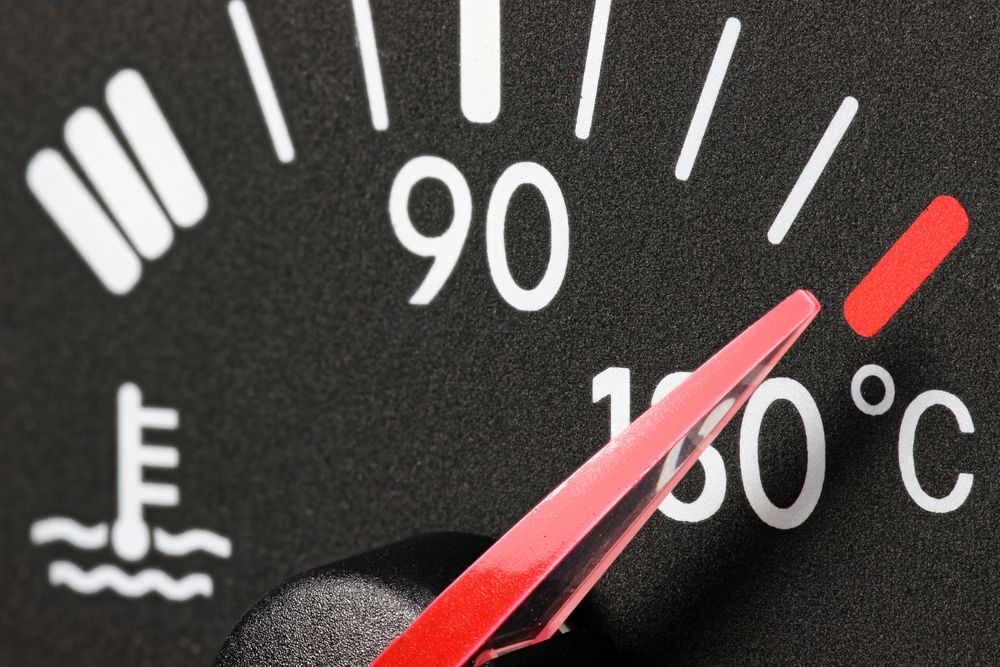 Overheating Car
Overheating Car
Water Pump
A faulty water pump could be why your car is overheating even with a new thermostat.
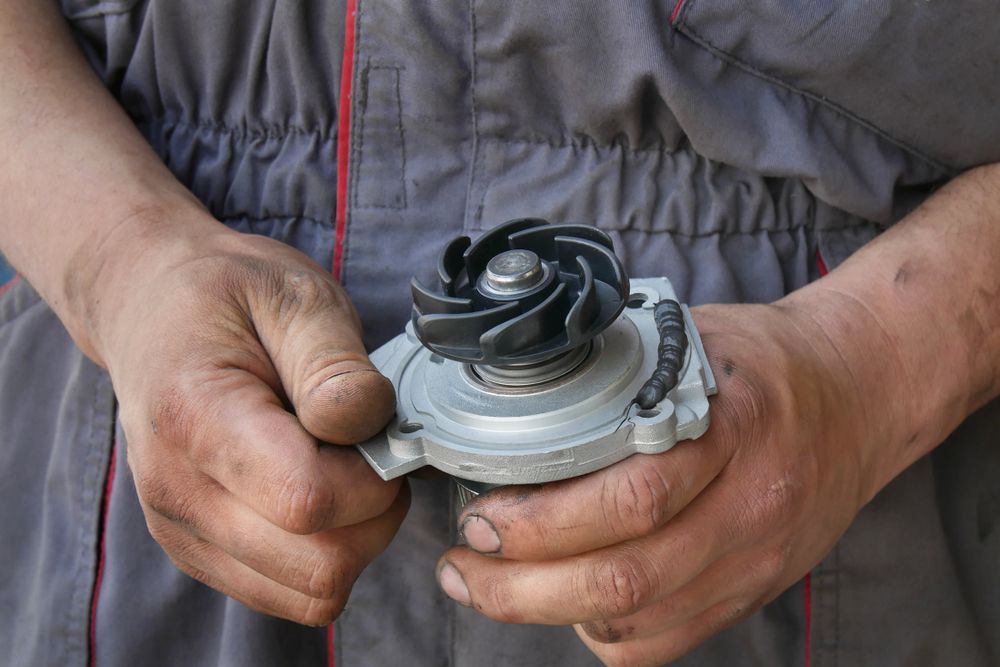 Car Water Pump
Car Water Pump
The vehicle's water pump (also called a coolant pump) is a centrifugal pump that pumps the engine's coolant through
the engine's radiator where the coolant cools off before being pumped through the engine again.
A water pump that is not working properly can lead to overheating because the hot coolant is not being pumped out of
the engine and replaced with the cooler fluid that is exiting the radiator.
Troubleshooting A Vehicle's Water Pump
A quick and easy way to troubleshoot a faulty water pump is to hold your hand on the top rubber hose running into the
radiator from the vehicle's engine while the engine is running and fully warmed up.
If the hose is not warm due to
warm coolant being circulated it means that the pump is not working.
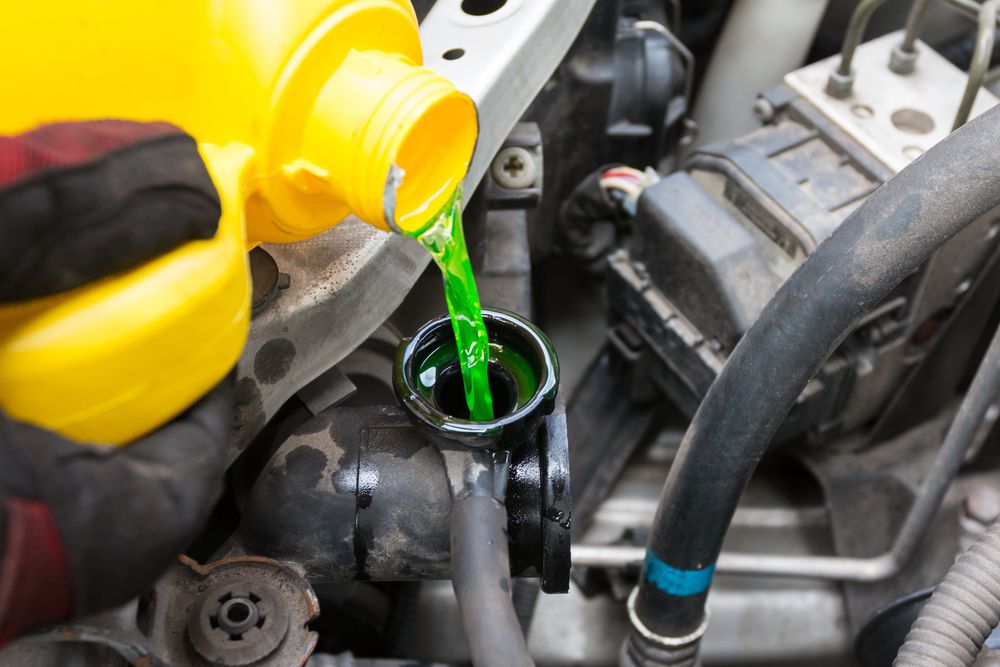 Car radiator being filled with coolant
Car radiator being filled with coolant
Failing Coolant
Even with a new thermostat ineffectual coolant could be the cause of your vehicle overheating.
Engine coolant is the fluid that gets pumped through your engine by the water pump to keep your engine from
overheating by removing the waste heat.
Engine coolant actually consists of a mixture of water and “antifreeze”, commonly glycol, which reduces the freezing
temperature of the coolant to prevent freezing in below freezing weather conditions.
The coolant also includes rust inhibitors to prevent corrosion from occurring in the cooling system as well as
lubricating chemicals to lubricate the water pump.
Beware: Use the proper coolant as specified in your owner's manual. Don't mix coolant
types. It may cause gelling which will hamper cooling.
Troubleshooting Issues With Coolant
Blocked Passageways
There are a multitude of passageways throughout your radiator and the water jacket in your engine throughout which
coolant flows.
These passageways can become blocked by rust, engine sediment and contaminants introduced into the
cooling system.
Note: Beware of using “stop leak” coolant system additives in your cooling system as an
easy fix. They will plug up the small coolant passageways along with the leak preventing coolant from reaching
throughout the engine to properly cool the motor.
A proper coolant flush using the right cleaners and procedures can clean out these passageways.
Low Coolant Level
Low coolant levels due to leaks, internal or external, can lead to overheating.
Inspect around the vehicle for
coolant puddles.
Loose radiator hose clamps, holes in the radiator hoses as well as holes in the radiator itself are
common culprits.
Improper Coolant Type
Improperly diluted coolant or the wrong type of coolant won't cool your engine like it's supposed too.
Make sure to
follow the coolant recommendations as laid out in your owner's manual.
Old Coolant
A coolant can lose its effectiveness over time. Check your coolant with a coolant tester.
Faulty Radiator
As the coolant passes through the radiator's fins it is being cooled by the passing air from either the vehicle
moving or from the radiator fan.
Signs Of A Faulty Radiator
White Sections - if you notice white flaky sections of your radiator, normally occurring at the corners, it means
that coolant is not reaching these parts of the radiator and your radiator is not being used to its fullest
potential.
White sections are normally caused because the fins in that section are plugged with rust or
debris.
Faulty Radiator Fan
It's important that your radiator fan works properly to move air through the radiator especially when the vehicle is
still at an idle.
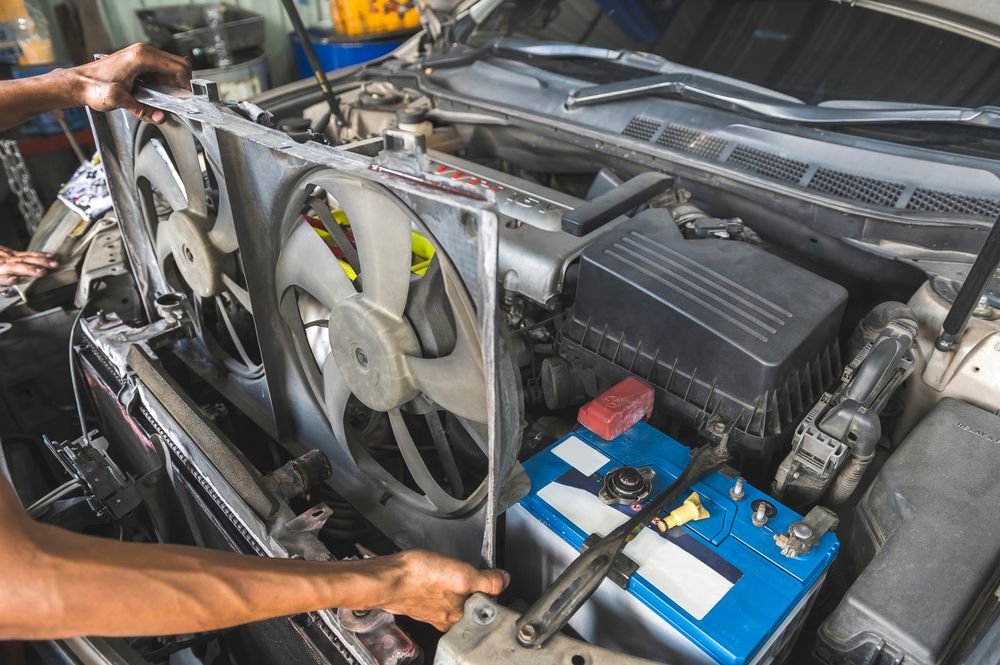 Car mechanic removing the radiator fan from the engine bay
Car mechanic removing the radiator fan from the engine bay
How To Troubleshoot A Faulty Radiator Fan
The fan should come when the A/C is on regardless of the coolant temperature.
It should also come on when the coolant
temperature exceeds 200 deg F.
Normal fan run time is around 20 seconds depending on outside temperature and humidity.
A fan that runs less than ⅓ of the time as well as a radiator temperature above 190 deg F indicates an efficient
cooling system.
If the fan isn't working properly it could be due to:
- Broken Fan Blade - visually inspect the fan ensuring all blades are there
- Fan Clutch - a simple way to diagnose a fan clutch is to spin the fan as hard as you can before the vehicle has
been started for the day. If it spins more than five times you can bet that the fan clutch is bad. It should
spin up to three times.
Bad Radiator Cap
The radiator cap acts as a pressure relief valve.
Due to engine temperature and coolant expansion, the pressure
builds in the cooling system until it reaches a high enough pressure and the radiator cap valve opens allowing the
excess pressure and coolant into an overflow reservoir.
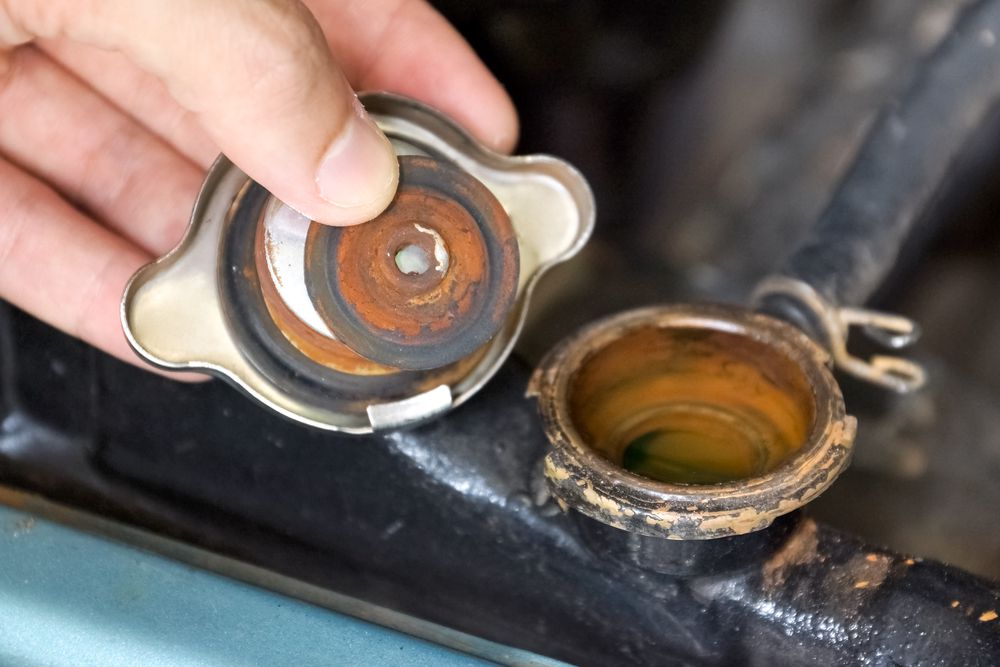 Damaged radiator cap
Damaged radiator cap
A bad radiator cap can definitely lead to overheating in a couple of ways:
- Dry, cracked or worn out seals on the cap will allow air into the cooling systems creating air pockets that
don't remove heat
- A cap leak won't allow the system to build up the necessary pressure to circulate the fluid throughout the
engine to remove the waste heat of the engine.
Electrical Connection Or Fuse
An electric fan has an electric motor that runs the fan.
You can inspect the fuse for the fan as well as check for
continuity at the fan to ensure power is reaching the electric motor.
Leaky Head Gasket / Cracked Cylinder Head
The head gasket is the seal between the engine block and cylinder head.
It seals the cylinders to ensure maximum
compression and avoid leakage of coolant or engine oil into the combustion chamber.
It is the most critical seal in
the engine and it's integrity is critical for a properly running engine.
A leaky head gasket or a cracked cylinder head are normally due to expansion and contraction of engine materials
along with high pressures caused by excessive overheating.
The Integrity of the system cooling system is compromised if there is a leaky head gasket or cracked cylinder head.
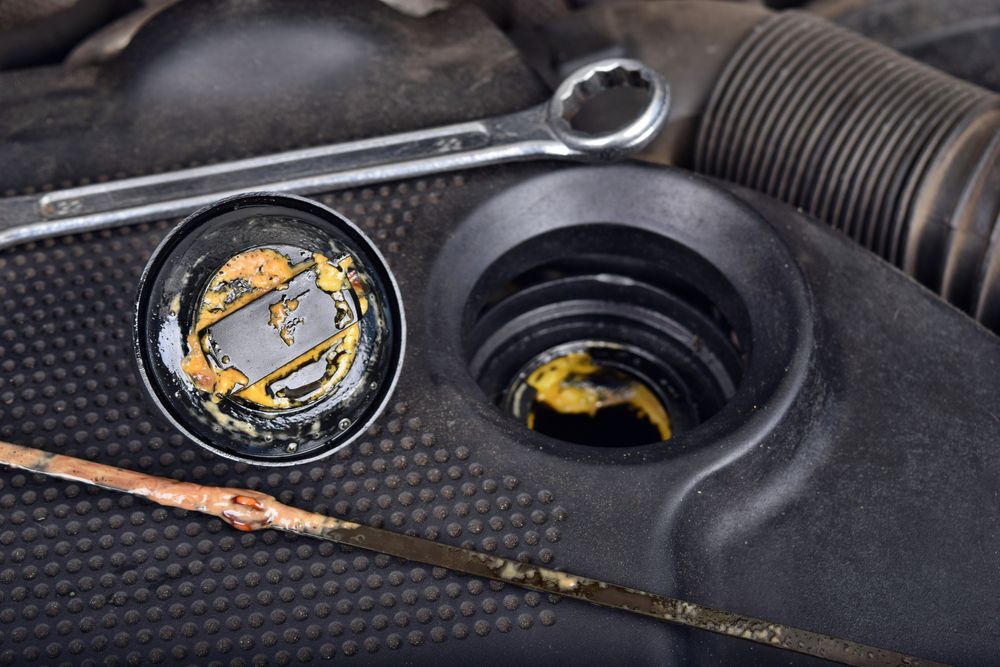 Sign of leaky head gasket is a yellowish greasy engine oil
Sign of leaky head gasket is a yellowish greasy engine oil
Symptoms of a leaky head gasket or cracked cylinder head include:
- coolant leaking externally from just below the exhaust manifold
- white smoke from the exhaust pipe
- combustion gas bubbles in the radiator or coolant reservoir
- overheating engine
- white milky residue and engine oil
- fouled spark plugs
- engine that is hard to start or runs poorly
- sludgy and/or brown coolant
A leak down test can be performed to measure the integrity of the cooling system by pressuring the system to a
specified pressure and monitoring it for a period of time while watching for the pressure to leak down.
Air In The Coolant System
Air in the coolant system disrupts the proper flow of fluid throughout the engine and radiator.
It can be caused by
improper filling or air entering the system while the radiator cap is removed.
Signs of air in the cooling system:
- engine overheating
- heater not working
- you can hear water sloshing around in your dash
How to bleed air out of your coolant system:
- park facing up on a steep incline if possible
- turn heater to Max setting
- ensure engine is completely cool and open radiator cap
- duct tape a funnel into the top of your radiator
- build a funnel about a quarter full
- start the car and let it run until it warms up
- who is the top radiator hose multiple times to help release the air
- rev the engine multiple times to help push their through the system
- let the car run for 10 to 15 minutes as the coolant cycles through the motor
Bad Heater Core
The heater core is what converts the temperature of your engine into hot air to heat your vehicle cabin.
A bad or leaky heater core can cause your vehicle to overheat for the following reasons:
- low coolant level due to leaking coolant
- loss of coolant system pressure
- introduction of air into the cooling system
Symptoms of a bad or leaky heater core are:
- little or no heat inside your car
- a coolant smell inside your
- windows fogging up
- coolant collecting underneath your dashboard
- engine overheating
- low coolant level
Coolant Temperature Sensor
A faulty engine temperature sensor can cause your vehicle to overheat by sending a permanent called or a permanent
hot signal.
Common symptoms of a faulty coolant temperature sensor are:
- overheating
- difficulty starting
- poor idle
- check engine light on
- electric radiator fan not working
Clogged Catalytic Converter
The catalytic converter is an exhaust emission control
device located in your exhaust pipe before the muffler. It
reduces toxic emissions by converting the toxins into less toxic pollutants.
A clogged or faulty catalytic converter can cause your engine to overheat because it needs to work harder due to the
plugged exhaust system.
Symptoms of a bad or clogged catalytic converter are:
- Slow acceleration and sluggish engine performance
- high heat underneath the vehicle
- dark exhaust smoke
- the smell of rotten eggs coming from the exhaust pipe
- overheating engine
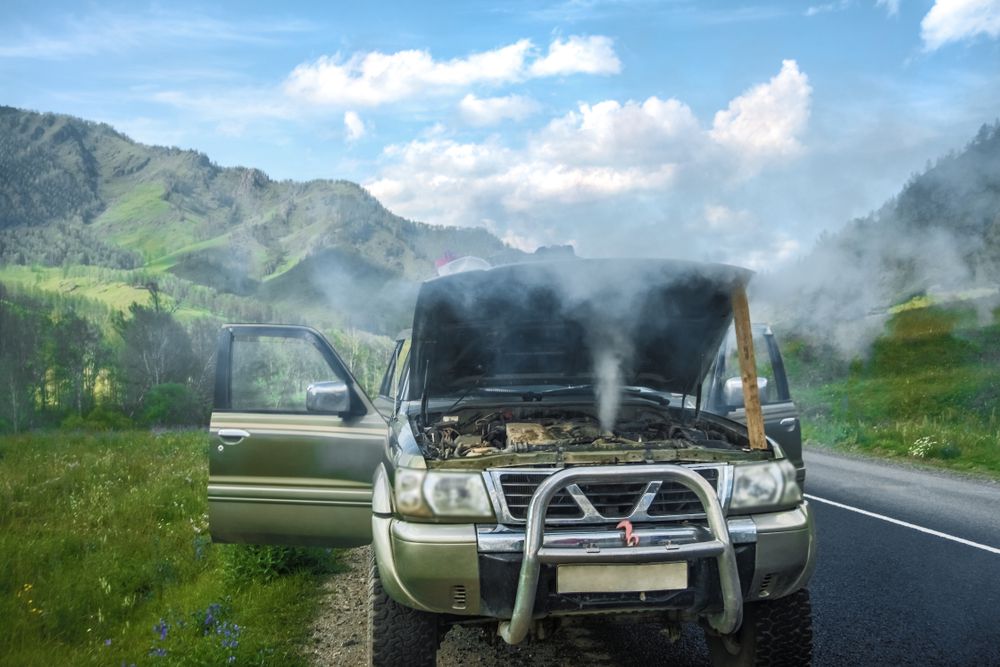 SUV overheating
SUV overheating
What To Do If Your Car Overheats?
- Pull over immediately rather than trying to get to the next service station.
- You should have an extra jug of pre-mixed coolant in the trunk. Let the radiator cool down and check the coolant
level. It may have overheated because of a low coolant level.
- Check that your fan belt is still there. It may have overheated due to a broken fan belt.
- Turn on the heater on full settings and turn A/C off. The A/C system puts extra strain on the cooling system and
by turning on the heater will expel excess heat out the vents in the car.
Beware: Opening a hot radiator could result in severe burns. Always let a radiator cool off
before opening.
Beware: Never poor cool coolant into a hot radiator.
The extreme temperature change that
will occur when the cool coolant comes in contact with the hot radiator could result in your radiator cracking.
Let your radiator cool off before adding coolant.
In Conclusion
Your car could be overheating with a new thermostat for a variety of reasons.
Take the time, or have a mechanic take
the time, to properly diagnose your cooling issues so you don't through any unneeded parts at the issue and get it
fixed once and for all.